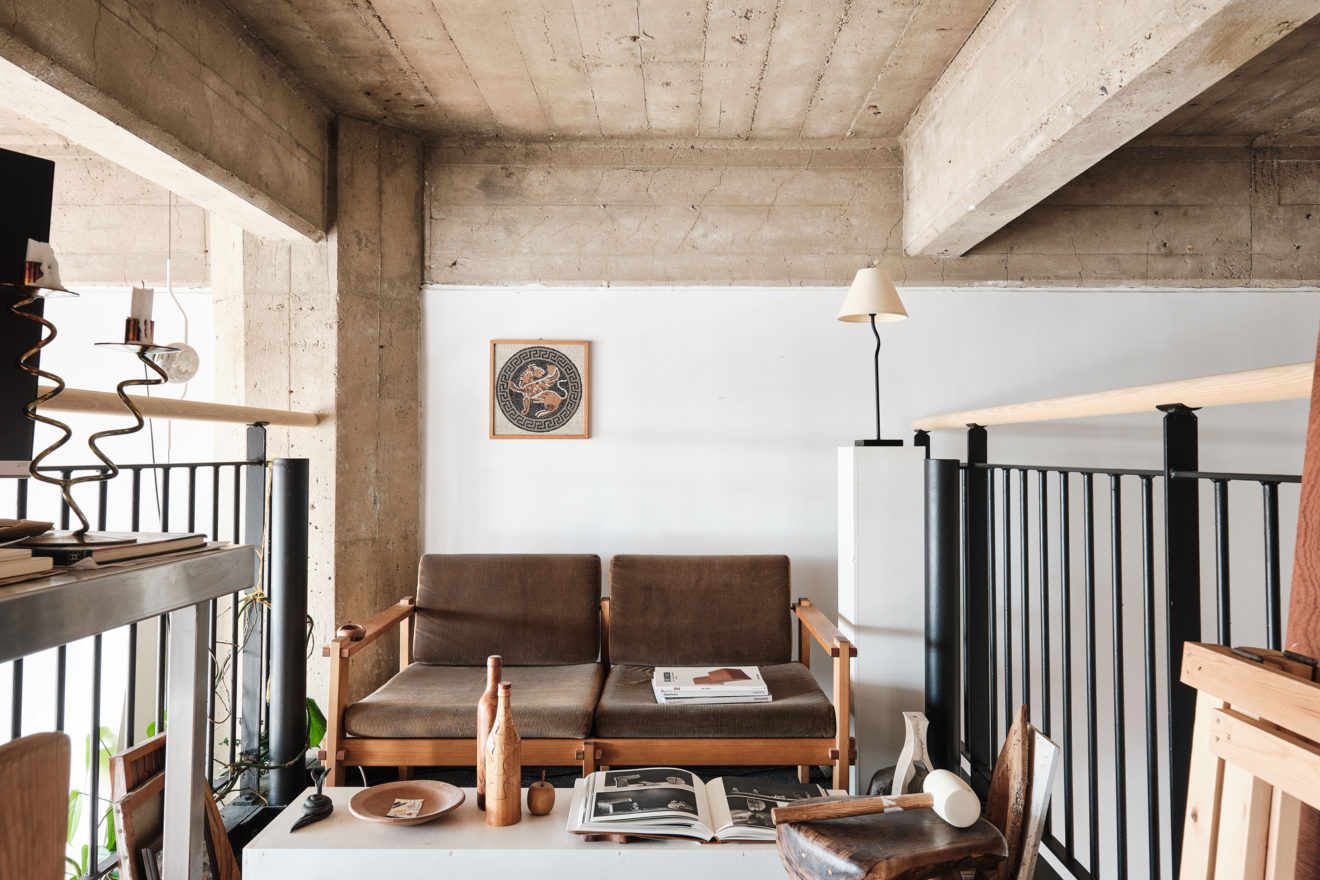Charlotte Taylor
As part of our Aucoot’s Favourites series, we interview some of the most inspiring creative talents across art, design and architecture to find out about their creative processes, and how they use their homes when they’re not ‘at work’. Here, we chat to Charlotte Taylor – an interdisciplinary designer and founder of 3D and moving image studio Maison de Sable. Charlotte also co-founded Dello Studio with Oscar Piccolo. Charlotte is known for the sublime, dream-like spaces she creates, which merge fantasy and reality to a point where anything is possible.
I’m in a converted textile factory just between London Fields and Victoria Park in Hackney, I fell in love with the neighbourhood and the very local spirit here.
Home is a very personal and individual space for me, it’s very reflective of the people living there.
Mushroom risotto is my staple dinner party dish.
I like the dining table to look like an organised mess, I have many sculptural candlesticks and different bowls to set the scene.
Breakfast is my favourite, particularly on the weekends to really have the time to cook properly. I have a very unorganised note on my MacBook of recipes collected over the years I always go back to.
I often make these madeleines from Sally’s Baking Addiction on weekends for breakfast.
Recipe:
Prep time: 1 hour, 15 minutes
Cooking time: 12 minutes
Yield: 18-20 madeleines
Ingredients:
– 1/2 cup unsalted butter (plus enough to grease the pan)
– 2 large eggs (room temperature)
– 1/2 cup granulated sugar
– 2 tsps lemon zest
– 1 tsp pure vanilla extract
– 1 cup all-purpose flour (sifted)
– 1/2 tsp baking powder
– 1/8 tsp salt
– confectioners’ sugar to sprinkle on top (optional)
Method:
1. Melt the butter in a microwave on in a pan on the stove. Set aside to cool.
2. Beat the eggs and sugar together on high speed for at least 8 minutes (if using an electric mixer), until the mixture is thick, pale and forms ribbons when you lift the beater. Then, beat in the lemon zest and vanilla extract.
3. Whisk the flour, baking powder, and salt together in a bowl. Gently fold in the egg mixture to these dry ingredients, half at a time, using a spatula or wooden spoon. Be sure to handle the batter with care, as it’s delicate.
4. Stir 1/4 cup of the batter into the melted butter and let it incorporate over a minute or so. Then, stir this into the rest of the batter – it should be thick, silky and shiny.
5. Cover the batter and chill in the fridge for 30-60 minutes. Don’t let it chill longer than this as the butter may solidify. Towards the end of the chill time, preheat the oven to 180°C / Gas Mark 4.
6. Melt a little butter and, using a pastry brush, lightly brush the madeleine pan with melted butter.
7. Your batter should be airy and spongey after resting – don’t try to deflate it. spoon a generous tablespoon of batter into the centre of each madeleine pan well (there’s no need to spread it to the edges). If you are cooking in batches, cover and refrigerate the rest of the batter until you need it again).
8. Bake the madeleines for 10-12 minutes. They’re done when the tops spring back after pressing on them lightly with your finger. Pop the madeleines out of the pan and onto a wire rack to cool.
9. Dust with confectioners’ sugar (if using) before serving. Madeleines are at their best right after baking, as they tend to dry out, so enjoy them straight away and throughout the day ahead.
One of my favourite projects is Villa Saraceni, a collaboration with the Italian creative Riccardo Fornoni. We envisaged a villa built into the cliffs of Scala dei Turchi in Sicily, with the house taking its organic home from the natural rock. The interior is very playful with a mix of rustic furniture, iconic design pieces and some young artists’ work.
The restrictions on travel have been challenging, as a large part of my practice is research orientated. I’ve really missed first hand experiences with architecture and space.
I have such a love of past designs that they also manage to make their way into the spaces. I also find it an interesting offset to have an ultra futurist setting/architecture with rather dated and vintage furnishings.
Casa Atibaia, I’m really craving to be in a remote landscape at the moment, the modernist house was designed to blend in with the surrounding nature, bringing the outside in.
There are a few pieces like, my Mario Botta chairs, that I used to include a lot in rendered interiors that now have a place in my home. This works the other way too – obscure handmade objects from my home are making appearances in my fictional projects.
I’m influenced by so many eras and movements, a period I really love is the 60s and 70s, particularly Italian Radical design for its playfulness and borderline madness in some cases.
Largely through references, I’m a serial image collector with files upon files of references spanning every style and era of architecture and interior design.
We are currently exploring the medium of VR and AR to be able experience the spaces in a more spatial sense.












